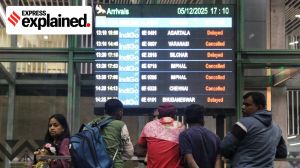I’m not thinking what you’re thinking
London in 2005 has never been so cosmopolitan. Its changing character has become the focus of the campaign for the general election on May 5...

London in 2005 has never been so cosmopolitan. Its changing character has become the focus of the campaign for the general election on May 5. In the past few weeks, immigration has shot to the top of the agenda. The Conservatives, led by Michael Howard, have put it there in their uphill attempt to oust PM Tony Blair’s Labour Party.
On the Tube, you barely hear English spoken, unless you’re on the Bakerloo Line on the way up to St. John’s Wood, where the Americans live. Everywhere, you hear Russian, Polish, Turkish and Arabic. The Conservatives’ decision to fight this poll over immigration, and their slogan—‘‘Are you thinking what we’re thinking?’’ with the implication that what they’re thinking would be better not spoken out loud—has been hugely controversial. It has only strengthened their image as ‘‘the nasty party’’.
The theme that ‘‘this island is full up’’ has struck a chord with important blocs of voters. The charge that there is no more room has left Blair and his Labor Party floundering over how to counter it. Opinion polls consistently show immigration high in British voters’ concerns, up there with education, only slightly behind health. The first of Howard’s charges, at least, is correct: There has been a sharp rise in immigration, and it dates from 1997, when Blair took office. Before then, in the mid-1990s, net immigration — the number of people coming in, minus the number going out — was steady at between 40,000 and 80,000 a year. The total flows in either direction were also steady—just over 300,000 a year coming in, and slightly fewer going out. From 1998 onward, that changed. More than 500,000 people a year have been coming in, and the net rise in the immigrant population as a result has been about 150,000. Partly, the numbers have been swollen by more workers from within the European Union. There have also been more people applying to come in from elsewhere around the world. But some of the rise—and the politically controversial part—has come from refugees or asylum seekers. Those applications were running at about 20,000 a year during the 1990s. But they jumped to five or six times this level in 2000, because of the Kosovo war, and the openness of Europe’s borders. Refugees make up only a tiny proportion of the total number of immigrants each year, most of whom have skills that Britain badly needs, particularly as its own population gets grayer. — LAT-WP
- 01
- 02
- 03
- 04
- 05































